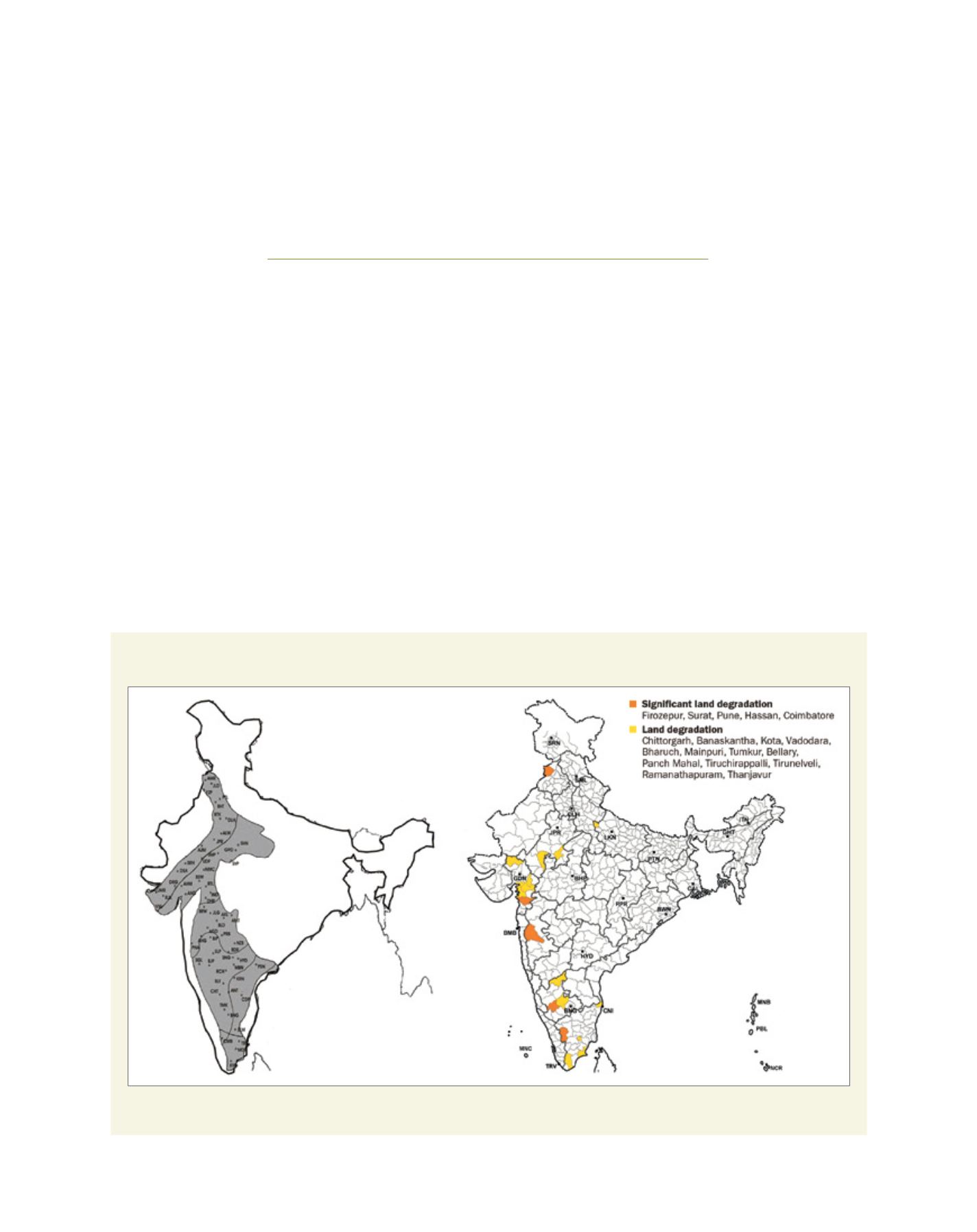

[
] 84
Combating desertification under climate
variability, climate change and reduction
of water resources in India
L. S. Rathore, N. Chattopadhyay and S. D. Attri, India Meteorological Department
A
big part of the world’s area is arid and prone to
desertification. Over the past few years, it has
become increasingly clear that desertification
is one of the most pressing global environmental chal-
lenges threatening to reverse the gains in sustainable
development in different parts of the world.
Various assessments by United Nations Environmental
Programme have continued to show that desertification
results from complex interactions among physical, chemi-
cal, biological, socioeconomic and political problems that are
local, national and global in nature. In India, 25 per cent of
the total land area is undergoing desertification while 32 per
cent is facing degradation for various reasons such as climate
variability, leading to extreme weather like drought, floods
and heatwaves, and the trend of different climatic parameters,
leading to reduction of water resources. This has affected the
productivity of crops and ultimately the livelihood and food
security of millions across the country. Thus the dryland areas
are more prone to desertification in India. Desertification and
loss of biological potential restricts the transformation of
drylands into productive ecosystems.
Dryland areas in India comprise annual rainfall between
40-100 cm and practically no irrigation facilities. They
India’s dry farming tract (left) and regions of land degradation (right)
Source: India Meteorological Department (left), NCC report, India Meteorological Department (right)
L
iving
L
and
















